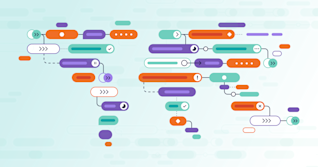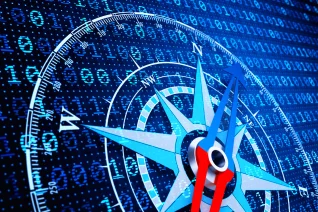In a remote, asynchronous company, is there ever a time when teams need to collaborate synchronously?
We recently asked ourselves that question on the Monitor team. It had been three years since we started thinking about how to build out Incident Management as a team, and a lot had happened in that time. We’d built out a range of new features and created the broad outlines for a complete incident management workflow with GitLab. We’d achieved a lot.
We had also been through a number of changes as a team, and we had several possible paths ahead of us. It felt like an appropriate moment to step back and take stock of where we’ve been, what we’ve done, and where we still need to go. However, given our team's geographical distribution, we realized we needed to think creatively about how best to create space for reflection as a team.
Opting for a Lightning Decision Jam
Outside of regularly scheduled team meetings, our team adheres to the standard GitLab practice of prioritizing asynchronous communication. Because our team is distributed around the world, this model usually works great for us. But, given the amount of time that had passed since we had all gathered together, this time around, we decided it might actually be nice to gather synchronously.
Owing to the time zone differences we'd face, we wouldn’t have a lot of time together. We needed to find a structure that would allow us to do some reflection as a team in a limited amount of time.
Enter: Lightning Decision Jam.
A Lightning Decision Jam (LDJ) is a quick way for teams to come together to collaboratively identify problems and challenges, and then work together to ideate on solutions for those challenges – all in one hour. This format would give us space to check in with each other as a team about the work that we’ve been doing, while keeping those discussions constrained in a way that would (hopefully) respect the fact we’d all be gathering at different times in our days.
How the LDJ worked?
We hosted the session on Zoom, and a majority of our team members were able to join the call synchronously. We met with the team members unable to join prior to the main LDJ session so they could participate as well. We also recorded the session so they could review the larger discussion afterward. We used Mural to collaborate during the session.
The session itself involved a series of time-boxed, individual brainstorming exercises, where each team member generated sticky notes in response to a prompt. Some of the brainstorming exercises included questions like:
- What is moving us forward?
- What’s gone well?
- What are the challenges that are holding us back?
- How might we address those challenges?
After each person generated their sticky notes, the ideas were shared with the group. After all the ideas were shared, we used dot voting to surface the ideas that had the most traction within the group.
What the LDJ taught us
There were a few things we observed as we conducted this exercise as a team.
At GitLab, we work in a monthly cadence. We have a large backlog of features to implement, and an ever-growing list of things to improve. All of these factors, taken together, can make it easy to focus on the things that aren’t yet where we'd like them to be, or that still need to be done.
That being the case, simply taking some time to reflect on what we’ve done well was a worthwhile exercise. Holistically thinking about what we’ve built over the past few years and taking a moment to pause and celebrate the things that we’d achieved as a team was a beneficial thing for us to do together.
Spending time thinking about the main challenges we face as we move forward was also a useful exercise. Importantly, though, we didn't just focus on the challenges; we also spent time ideating on solutions and voting together, as a team, on which solutions seemed the most meaningful to action. These additional steps helped us to re-align and re-focus on the path ahead.
Of course, we could have done some reflection on these topics outside of an in-person, synchronous session. The benefit of doing this as part of the LDJ was that we all got to spend some time together as a team, brainstorming and collaborating in real-time. Especially now, due to the global circumstances and the pandemic more generally, being able to see, hear, and spend time with each other has a certain intrinsic value, especially in terms of team cohesion. Furthermore, the strict structures of the LDJ meant that we could spend some time discussing these topics in a focused way. While we didn’t get to discuss everything as thoroughly as we would have liked, it at least gave us space and the opportunity to start the conversation.
What’s next?
The result of the LDJ was a set of GitLab issues that outline the opportunities we identified. These issues already have ideas attached to them that have been vetted by the team, so they are immediately actionable. The hope is that we can start experimenting with the ideas we've generated in upcoming milestones, and that these ideas will help us address our larger goal of increasing the number of people using our features.
We also conducted an asynchronous plus-delta exercise to identify opportunities for improving similar sessions in the future. In particular, there was interest in conducting the entire LDJ asynchronously, so everyone can participate at their leisure, perhaps having team members spend 5-10 minutes on five consecutive days to complete all of the exercises independently. This may also give people the room to reflect on the questions more deeply than we can do in a live, in-person session.
My hope, though, is that this is just the first of these kinds of collaborative workshops that we can do as a team. Experimenting with different ways of thinking about problems, and different ways of interacting, should help keep us feeling aligned and engaged with the path ahead. It also gives everyone a chance to have a voice in what we do, which, for me, may well be the most important thing.



